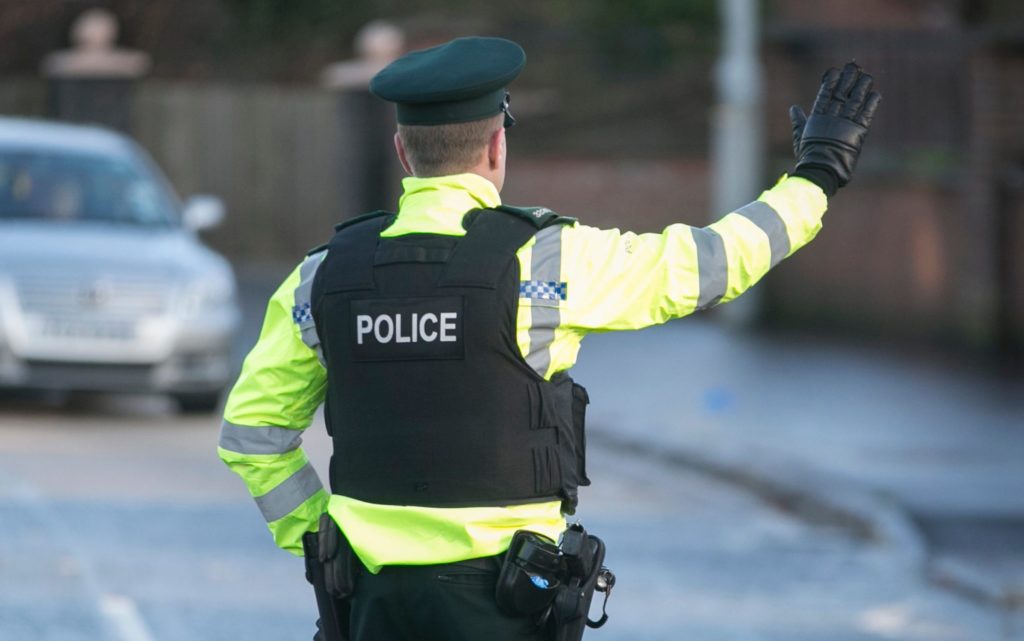Northern Ireland police investigating the area surrounding a hoax bomb escaped injury when a second device exploded near Newtownbutler in County Fermanagh on Monday, August 19.
“Police had received a report that a suspect device had been left in the area of Wattle Bridge on Saturday evening,” Deputy Chief Constable Stephen Martin said in a statement. “The area was secured by police and a full clearance operation began on Sunday morning.”
But at around 10:35 a.m. on Monday morning, police officers reported an explosion “in the area of the Cavan Road at its junction with the Wattlebridge Road,” Martin said, adding that there were no reports of injuries.
“The initial report received by police indicated that a device had been left on the Wattlebridge Road however the explosion occurred on the main A3 Cavan Road,” he said.
The Wattlebridge Road-Cavan Road junction is around a mile from two separate border crossing points between Northern Ireland and Ireland.
Police in Northern Ireland and Ireland have said that a return to a hard border on the island after Brexit could result in an increase in attacks by militant groups.
“While this investigation is at a very early stage I am of the firm belief this was a deliberate attempt to lure police and ATO [British army Ammunition Technical Officer] colleagues into the area to murder them,” Martin added.
Martin later told reporters that two dissident Irish republican groups, the New IRA and the Continuity IRA, “would be a very good starting point for the investigation,” AFP reported.
The bombing was the second similar incident in recent weeks.
On July 26, police were alerted by a report of a loud bang in the Tullygally Road area of Craigavon.
The Irish News received a telephone call claiming that a “horizontal mortar was fired at a passed police patrol” on the Tullygally Road but had “missed its target,” and that left “a warhead in the vicinity.”
Police later discovered what appeared to be a horizontal mortar that had been fired, but on examination, a viable booby-trap bomb was found hidden inside a concrete block beside a metal tube.
Detective Superintendent Richard Campbell said that “a mortar was not fired and in fact the entire incident was staged in order to bring police into an area where another deadly and unstable device awaited.”
The dissident Irish republican group known at the Continuity IRA is understood to have been responsible for the Craigavon bomb, The Irish News reported.
The 1998 Good Friday or Belfast Agreement ended what is known as The Troubles, three decades of violence in Northern Ireland beginning in the late 1960s in which more than 3,500 people were killed, the majority by predominantly Catholic Irish republicans who want the reunification of Ireland, but also by mainly Protestant loyalists who want Northern Ireland to remain part of the United Kingdom, as well as the security forces.
The violence also spilled over into Ireland, the United Kingdom mainland, and Europe.
The Irish Republican Army called a final ceasefire in 1997 and announced an end to its armed campaign in 2005, stating that it would seek to achieve its aims through peaceful political means, but various dissident Irish republican groups opposed to the peace process have continued to use the name IRA, and there have been sporadic violent incidents since.
The largest dissident grouping, known as the New IRA, has been increasingly active in recent months.
Using a recognized codeword, the New IRA claimed responsibility for putting an explosive device under a police officer’s car in Belfast on June 1
The New IRA on April 23 admitted shooting to death journalist Lyra McKee during rioting in the northwestern city of Derry. McKee was shot on April 18 by an unknown gunman who was firing at police in the Creggan area of Derry, also known as Londonderry. She later died from her injuries in hospital.
In January, a car bomb exploded outside a courthouse in Derry, an attack also blamed on the New IRA.
Since then, a number of weapons caches have been uncovered in the southeast of Northern Ireland and just across the border in Ireland.
Dissident Irish republicans have also taken credit for a series of explosive devices sent to Great Britain in March, with the New IRA claiming they sent four mail bombs that were recovered in London and Glasgow. A fifth “viable device” was discovered at the National Returns Letter Centre in Limerick after it had been returned by the postal service from the United Kingdom.



